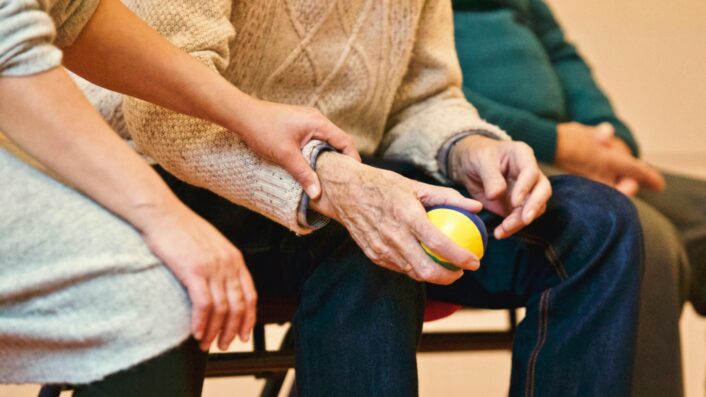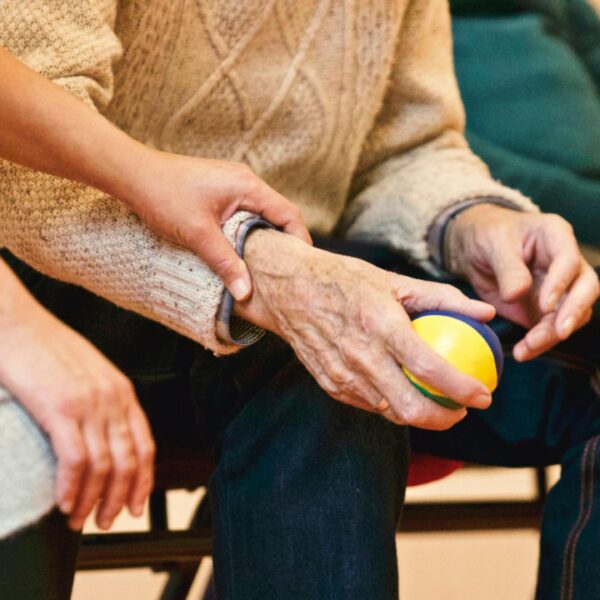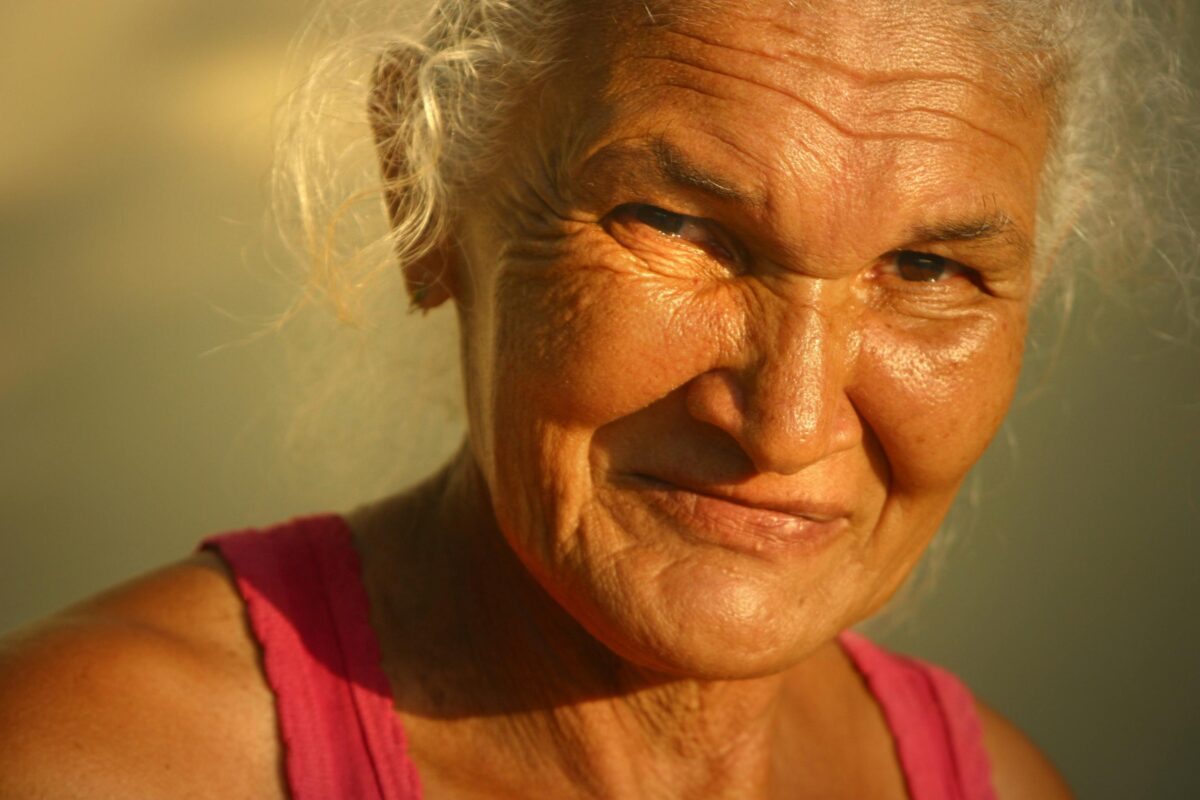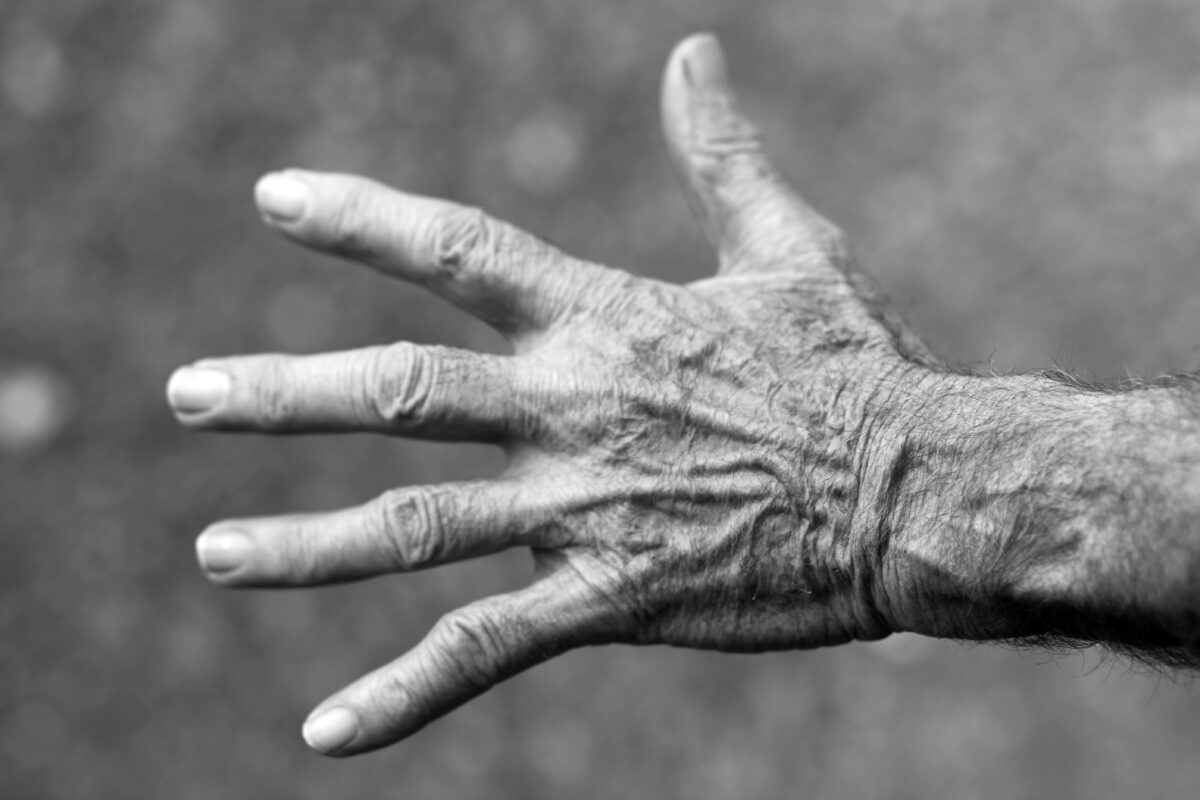The Genetics of Age-related Muscle Mass Loss
Aira
on
August 12, 2024
Overview
As people age, their bodies undergo numerous changes, one of the most significant being the gradual loss of muscle mass, a condition scientifically known as sarcopenia. This silent thief can dramatically affect strength, mobility, and overall quality of life, making it a crucial topic for those interested in healthy aging.
What is Muscle Mass Loss?
Muscle mass loss is the gradual decline in muscle tissue that occurs as a natural part of aging. This process is not just a matter of getting weaker; it can significantly impact overall health, mobility, and quality of life.
Several factors contribute to muscle mass loss. One of the primary culprits is a sedentary lifestyle. As people age, they tend to become less active, leading to muscle atrophy due to disuse. Regular physical activity, especially resistance training, is crucial to maintain muscle mass.
Hormonal changes also play a significant role. In men, declining testosterone levels contribute to muscle loss. Similarly, in women, the drop in estrogen after menopause accelerates muscle deterioration. Both hormones are essential for muscle growth and maintenance. Genetics significantly influence how muscles age.
Nutrition is another key factor. Adequate protein intake is vital for muscle repair and growth. Without sufficient dietary protein, muscle loss can accelerate. Additionally, chronic diseases such as diabetes and cardiovascular conditions can exacerbate muscle deterioration by impairing blood flow and nutrient delivery to muscle tissues.
Maintaining muscle mass requires a proactive approach. By understanding the genetic and lifestyle factors involved, individuals can take targeted steps to preserve their muscle health and maintain their quality of life as they age.

When Does Age-Related Muscle Mass Loss Usually Start?
Age-related muscle mass loss, or sarcopenia, typically begins around the age of 30. From this point, most individuals lose about 3-5% of their muscle mass per decade, with the rate of loss increasing significantly after age 60. This gradual decline can impact strength, mobility, and overall health.
Recognizing that age-related muscle loss often begins in one’s 30s emphasizes the importance of early intervention. Regular exercise, a balanced diet rich in protein, and awareness of genetic factors can help maintain muscle mass and promote healthier aging.
Is Age-Related Muscle Mass Loss Genetic?
CAV1 Gene
A 2014 study explored the role of the Caveolin-1 (CAV1) gene in the development of sarcopenia within a Taiwanese population. Researchers examined 175 sarcopenia patients (including those with pre-sarcopenia, sarcopenia, and severe sarcopenia) and 327 age- and gender-matched controls.
The study focused on six single nucleotide polymorphisms (SNPs) in the CAV1 gene: C521A, G14713A, G21985A, T28608A, T29107A, and G32124A. Among these, the G14713A variant showed a significant association with sarcopenia. Individuals with AG or AA genotypes of the G14713A SNP had a 1.65 to 1.78 times higher risk of developing sarcopenia compared to those with the GG genotype. Specifically, carriers of the AG or AA genotypes were more likely to have sarcopenia and severe sarcopenia, but not pre-sarcopenia.
The study suggested that the CAV1 G14713A (rs3807987) variant is critical in sarcopenia development. Individuals with the A allele of this gene variant are at a higher risk of sarcopenia, suggesting that this genetic marker could be used for early detection and prevention strategies.
VDR Gene
In an older 2004 study, researchers studied the relationship between vitamin D receptor (VDR) genotypes and muscle mass in 302 older Caucasian men, aged 58-93. They used dual-energy X-ray absorptiometry to measure body composition and collected data on health, physical activity, and diet. Participants were genotyped for two VDR polymorphisms: The so called FokI (FF, Ff, ff) and BsmI (BB, Bb, bb).
The BsmI polymorphism showed no significant link to fat-free mass (FFM). However, the FokI polymorphism (rs2228570 A>G) was significantly associated with total FFM, appendicular FFM, and relative appendicular FFM. Specifically, men with the FF genotype (two risk alleles) had significantly lower FFM compared to those with Ff or ff genotypes. For example, the total FFM was 57.6 kg for FF, 59.4 kg for Ff, and 59.4 kg for ff.
Logistic regression adjusted for age revealed that FF homozygotes (rs2228570-GG) had a 2.17 times higher risk of sarcopenia (low muscle mass) compared to men with at least one risk allele. This suggests that the FokI polymorphism significantly influences muscle mass and sarcopenia risk in older men.
For the FokI polymorphism, the FF genotype was also linked to lower body mass and BMI, but not to differences in age, height, physical activity, caloric or protein intake, vitamin D levels, or body fat percentage. Vitamin D supplementation did not vary by genotype and did not affect results.
The study found no interaction between FokI genotype and vitamin D levels affecting the FFM. Sarcopenia prevalence was 24.8%, with a higher frequency of FF genotypes in sarcopenic men. FF men had a 2.17-fold increased risk of sarcopenia compared to ff men, independent of age. The BsmI polymorphism was not linked to sarcopenia.
FokI genotype also correlated with quadriceps strength, but adjusting for FFM differences eliminated this association, suggesting the FokI effect on muscle strength is mediated through its impact on muscle mass.
ACTN3 Gene
In another 2017 study, researchers investigated how the ACTN3 gene variation affects muscle and bone health in older Korean adults. The study included 62 men and 270 women with an average age of 73.7 years. Using dual-energy X-ray absorptiometry, they measured body mass index (BMI), body fat, muscle mass, and bone mineral density (BMD). They found out that 46.8% of men and 23.3% of women had sarcopenia.
Participants were genotyped for the ACTN3 R577X polymorphism (rs1815739) using TaqMan probes. Results showed that individuals with the XX genotype (rs1815739-TT) of the ACTN3 gene had a significantly higher risk (2.2x) of both sarcopenia (muscle loss) and osteoporosis compared to those with the RR genotype. Specifically, XX homozygotes had more than twice the risk of sarcopenia, even after adjusting for factors like age, gender, body fat, and vitamin D levels. However, the increased risk of osteoporosis in XX homozygotes was no longer significant after similar adjustments.
Also, significant differences in bone health were observed among ACTN3 genotypes. RR and RX genotypes had higher BMDs and T-scores for the femur neck and total body compared to XX genotypes. RR homozygotes also had higher BMDs for the femur neck and total body than XX homozygotes. For muscle mass, RR homozygotes had higher appendicular skeletal muscle mass (ASM) compared to XX homozygotes. This highlights the connection between adequate muscle mass and bone health, both critical for healthy aging.
IGFBP3 Gene
Researchers in a 2014 study also investigated how specific genetic polymorphisms influence muscle mass in older Taiwanese adults. Previous studies showed that variations in the genes for insulin-like growth factor-1 (IGF-1) and its binding protein-3 (IGFBP3) can affect blood levels of IGF-1, which is linked to muscle size. This study aimed to explore the effects of IGF1, IGFBP3, and IGFBP5 gene polymorphisms on appendicular skeletal muscle mass (ASMI) in this population.
The study was conducted in a community setting with a random sample of 472 older adults from the Taichung Community Health Study for Elders (TCHS-E). Participants underwent dual-energy X-ray absorptiometry (DXA) to measure muscle mass, and their genetic profiles and serum IGF-1 levels were analyzed.
Results showed that 7.1% of participants aged 70 or younger, 8.8% of those aged 71 to 75, and 23% of those older than 75 had a low muscle index (ASMI). Serum IGF-1 levels were significantly lower in the low ASMI group compared to the normal ASMI group. The study found a significant association between the SNP rs2854744 near the IGFBP3 gene and low ASMI. Additionally, the SNP rs6214 on the IGF1 gene significantly affected serum IGF-1 levels.
The combined effect of rs6214 and rs2854744 was particularly notable. Elders with the GG genotype of rs6214 AND AC or CC genotypes of rs2854744 had a 3.18-fold higher risk of low ASMI compared to those with the AA genotype of both SNPs, after adjusting for various factors like age, gender, smoking, exercise, hyperlipidemia, and albumin levels. Those with a rs2854744-AC (=TG) genotype alone had a 1.66-fold higher risk of low ASMI.
These findings suggest that rs2854744 near the IGFBP3 gene, as well as the rs6214 on the IGF1 gene and are important genetic factors influencing muscle mass in older Taiwanese adults living in metropolitan areas.
What Other Factors Can Influence Age-Related Muscle Mass Loss?
Various environmental factors that interact with genetic predispositions influence age-related muscle mass loss. Understanding these factors can help individuals adopt strategies to mitigate muscle loss and maintain muscle health as they age. Here are the key environmental factors affecting age-related muscle mass loss:
- Physical Activity Levels: One of the most significant environmental factors is physical activity. Regular exercise, particularly resistance training and weight-bearing activities, helps maintain muscle mass and strength. Physical inactivity, on the other hand, leads to muscle atrophy. Studies have shown that individuals who engage in regular physical activity experience slower rates of muscle loss compared to those with sedentary lifestyles.
- Diet and Nutrition: Adequate nutrition is crucial for muscle health. Protein intake, in particular, plays a vital role in muscle maintenance and growth. Older adults require higher protein intake to stimulate muscle protein synthesis effectively. A diet rich in essential amino acids, found in animal and plant proteins, helps preserve muscle mass. Additionally, nutrients such as vitamin D, omega-3 fatty acids, and antioxidants support muscle function and reduce inflammation.
- Hormonal Changes: While hormonal changes are partly genetic, environmental factors such as stress, sleep, and diet can influence hormone levels. Chronic stress and poor sleep can lead to hormonal imbalances that exacerbate muscle loss. For example, cortisol, a stress hormone, can promote muscle breakdown. Ensuring adequate sleep and managing stress through mindfulness and relaxation techniques can help maintain hormonal balance.
- Chronic Diseases: Chronic diseases such as diabetes, cardiovascular disease, and chronic obstructive pulmonary disease (COPD) can accelerate muscle loss. These conditions often result in inflammation and impaired blood flow, which negatively affect muscle health. Managing chronic conditions through medication, lifestyle changes, and regular medical check-ups is essential to mitigate their impact on muscle mass.
- Inflammation: Chronic low-grade inflammation, often associated with aging, contributes to muscle degradation. Environmental factors such as poor diet, lack of exercise, and exposure to pollutants can increase inflammatory markers in the body. Consuming anti-inflammatory foods, such as fruits, vegetables, and fatty fish, and avoiding processed foods can help reduce inflammation.
- Smoking and Alcohol Consumption: Smoking and excessive alcohol consumption are detrimental to muscle health. Smoking impairs blood flow and nutrient delivery to muscles, while excessive alcohol intake can interfere with protein synthesis and hormonal balance. Quitting smoking and moderating alcohol consumption are crucial steps to protect muscle mass.
- Sunlight Exposure: Vitamin D, synthesized through sunlight exposure, is vital for muscle function. It aids in calcium absorption and muscle contraction. Older adults often have reduced outdoor activity, leading to vitamin D deficiency. Ensuring sufficient sunlight exposure or taking vitamin D supplements can support muscle health.
- Social and Psychological Factors: Social isolation and psychological stress can negatively impact physical health, including muscle mass. Engaging in social activities, maintaining strong social networks, and seeking mental health support when needed can contribute to overall well-being and indirectly support muscle health.
- Healthcare Access: Access to healthcare services, including regular check-ups, physical therapy, and nutritional counseling, is crucial for the early detection and management of sarcopenia. Environmental factors such as socioeconomic status and geographic location can influence access to quality healthcare. Ensuring regular health screenings and professional guidance can help manage and prevent muscle loss.
- Occupational and Recreational Activities: The nature of one’s occupation and recreational activities can influence muscle mass. Jobs requiring physical labor or frequent movement help maintain muscle strength, while sedentary jobs contribute to muscle loss. Engaging in recreational activities that involve physical exercise, such as hiking, dancing, or gardening, can counteract the effects of a sedentary occupation.
While genetics play a significant role in age-related muscle mass loss, environmental factors such as physical activity, diet, chronic disease management, and lifestyle choices significantly influence the rate and extent of muscle loss. By addressing these factors through informed lifestyle changes, individuals can effectively mitigate muscle mass loss and promote healthier aging.
What are the Different Types of Muscle Mass Loss?
Muscle mass loss can occur in several forms, each with distinct causes and characteristics. Understanding these types helps in identifying the underlying issues and tailoring effective prevention and treatment strategies.
- Sarcopenia: Sarcopenia is age-related muscle mass loss that typically begins in adulthood and accelerates after the age of 60. It results from a combination of factors, including hormonal changes, reduced physical activity, and inadequate nutrition.
- Cachexia: Cachexia is a severe form of muscle wasting often associated with chronic diseases such as cancer, heart failure, and chronic obstructive pulmonary disease (COPD). Unlike sarcopenia, cachexia involves a complex interplay of inflammation, metabolic changes, and reduced appetite, leading to significant muscle loss and weight loss. It is a serious condition that requires medical intervention to manage both the underlying disease and the muscle wasting.
- Disuse Atrophy: Disuse atrophy occurs when muscles are not used for extended periods, leading to shrinkage and weakness. This can happen due to prolonged bed rest, immobilization after an injury, or a sedentary lifestyle. Without regular muscle stimulation through physical activity, muscles lose their strength and size. Fortunately, disuse atrophy can often be reversed with physical therapy and increased activity.
- Neurogenic Atrophy: Neurogenic atrophy is caused by nerve damage or diseases affecting the nervous system, such as amyotrophic lateral sclerosis (ALS), multiple sclerosis (MS), or spinal cord injuries. When nerves that control muscles are damaged, the muscles cannot function properly and begin to waste away. This type of muscle loss is often more severe and harder to reverse, requiring specialized medical and rehabilitative care.
Understanding these various types of muscle mass loss highlights the importance of maintaining an active lifestyle, proper nutrition, and seeking medical advice for underlying health conditions. Recognizing the role of genetics can also guide personalized approaches to preventing and managing muscle loss effectively.
Is Age-Related Muscle Mass Loss Dangerous to Your Health?
Age-related muscle mass loss, known as sarcopenia, can pose significant health risks. As muscle mass declines, it leads to decreased strength and mobility, increasing the likelihood of falls and fractures. According to the CDC, falls are the leading cause of injury among older adults, and muscle weakness is a major contributing factor.
Sarcopenia also affects metabolic health. Muscles play a crucial role in regulating glucose levels and maintaining metabolic balance. Reduced muscle mass can lead to insulin resistance, increasing the risk of type 2 diabetes. Furthermore, lower muscle mass is associated with a higher risk of cardiovascular diseases.
Loss of muscle mass can also impact overall quality of life. It can lead to difficulties in performing daily activities, such as climbing stairs, carrying groceries, or even rising from a chair. This decline in physical function can result in increased dependence on others and a loss of independence, which can negatively affect mental health.
Ways to Reduce Potential of Age-Related Muscle Mass Loss
Age-related muscle mass loss is a common concern as individuals age. Fortunately, there are several evidence-based strategies that can help reduce the risk and mitigate the effects of muscle loss. Here are some ways to preserve muscle mass and function:
Regular Exercise
Engaging in regular physical activity, particularly resistance training and strength exercises, is one of the most effective ways to combat muscle mass loss. Studies have shown that resistance training increases muscle mass, strength, and functional capacity in older adults. Aim for at least two to three sessions per week, focusing on major muscle groups such as legs, arms, chest, back, and core.
Protein-Rich Diet
Protein is essential for muscle repair and growth, making adequate protein intake crucial for preserving muscle mass. Older adults may require higher protein intake to maintain muscle health. Aim to include protein-rich foods such as lean meats, poultry, fish, eggs, dairy products, legumes, nuts, and seeds in your diet. Consuming protein with each meal and snack throughout the day can help optimize muscle protein synthesis.
Balanced Nutrition
In addition to protein, a balanced diet rich in vitamins, minerals, and antioxidants supports overall muscle health. Ensure adequate intake of fruits, vegetables, whole grains, and healthy fats to provide essential nutrients for muscle function and repair. Avoid excessive intake of processed foods, sugary snacks, and unhealthy fats, which can contribute to inflammation and muscle deterioration.
Hydration
Staying hydrated is essential for optimal muscle function. Dehydration can impair muscle performance and recovery. Aim to drink plenty of water throughout the day, particularly before, during, and after exercise.
Bone Health
Strong bones are essential for supporting muscle function and preventing falls and fractures. Ensure adequate intake of calcium, vitamin D, and other bone-supportive nutrients through diet and, if necessary, supplementation. Weight-bearing exercises such as walking, jogging, and dancing also promote bone health.
Regular Medical Check-Ups
Regular medical check-ups allow for early detection and management of underlying health conditions that may contribute to muscle mass loss, such as diabetes, cardiovascular disease, and hormonal imbalances. Work with healthcare professionals to address any health concerns and develop a personalized plan for maintaining muscle health.
Social Engagement
Maintaining social connections and engaging in meaningful activities can positively impact overall health and well-being, including muscle health. Participate in social activities, hobbies, and community events to stay active and connected.
Mind-Body Practices
Mind-body practices such as yoga, tai chi, and meditation can improve balance, flexibility, and body awareness, reducing the risk of falls and injuries. These practices also promote relaxation and stress management, which can benefit overall muscle health.
By incorporating these strategies into daily life, individuals can proactively reduce the potential of age-related muscle mass loss and promote healthier aging. Consult with healthcare professionals or certified fitness trainers for personalized guidance and support in implementing these recommendations.
LifeDNA’s Age-Related Muscle Mass Loss Trait Report
Unlock the secrets of aging gracefully with LifeDNA’s Age-Related Muscle Mass Loss Trait Report. Delve into the depths of your genetic blueprint to uncover personalized insights into how your body responds to the passage of time. Our scientifically-backed and comprehensive report provides you with valuable information about your genetic predisposition to age-related muscle mass loss.
By understanding your unique genetic profile, you can tailor your lifestyle choices to better support your muscle mass as you age. Whether it’s optimizing your exercise routine, fine-tuning your nutrition, or implementing targeted supplementation, our report empowers you to make informed decisions that align with your genetic predispositions.
LifeDNA offers a range of comprehensive reports covering various aspects of wellness, nutrition, fitness, sleep, skincare, vitamins and supplements, personality and cognition, and more. With more than 200 trait reports available under our 7 main reports, you can gain a holistic understanding of your genetic makeup and how it impacts your daily life.
Don’t wait until the signs of aging catch up with you—start your wellness journey today with LifeDNA. Take the first step towards a healthier and more vibrant future by unlocking the secrets hidden within your DNA. With our premium reports and personalized insights, you can take control of your well-being like never before. Begin your journey to a better you today.
Summary
- Age-related muscle mass loss, or sarcopenia, significantly affects strength, mobility, and quality of life. Muscle mass loss begins around age 30, accelerating after age 60, impacting overall health and daily functions.
- Factors contributing to muscle loss include a sedentary lifestyle, hormonal changes, nutrition, chronic diseases, and genetics. Regular physical activity, especially resistance training, is crucial to maintain muscle mass.
- Genetic factors significantly influence muscle aging. Specific genetic polymorphisms, such as in the CAV-1 GFBP3, VDR, and ACTN3 genes, are linked to muscle mass in older adults.
- Environmental factors such as physical activity, diet, hormonal changes, chronic diseases, inflammation, smoking, alcohol consumption, sunlight exposure, social engagement, and healthcare access also influence muscle mass loss.
- Types of muscle mass loss include sarcopenia, cachexia, disuse atrophy, and neurogenic atrophy.
- Sarcopenia, age-related muscle loss, increases the risk of falls, fractures, insulin resistance, and cardiovascular diseases.
- Strategies to reduce muscle mass loss include regular exercise, a protein-rich diet, balanced nutrition, hydration, bone health, regular medical check-ups, social engagement, and mind-body practices.
- Genetics and environmental factors together influence age-related muscle mass loss, necessitating proactive lifestyle choices to maintain muscle health and quality of life.
References
- https://pubmed.ncbi.nlm.nih.gov/30427277/#:~:text=Sarcopenia%20is%20a%20loss%20of,costly%20hospitalization%20and%20extended%20rehabilitation.
- https://www.betterhealth.vic.gov.au/health/healthyliving/resistance-training-health-benefits
- https://www.webmd.com/healthy-aging/sarcopenia-with-aging
- https://www.bhf.org.uk/informationsupport/risk-factors/physical-inactivity
- https://my.clevelandclinic.org/health/articles/22187-cortisol
- https://www.who.int/news-room/fact-sheets/detail/chronic-obstructive-pulmonary-disease-(copd)#:~:text=Overview,damaged%20or%20clogged%20with%20phlegm.
- https://iv.iiarjournals.org/content/28/3/383.long
- https://www.hindawi.com/journals/bmri/2017/4239648/
- https://www.jamda.com/article/S1525-8610(14)00772-5/abstract
- https://www.medicalnewstoday.com/articles/161618
- https://www.verywellhealth.com/what-is-disuse-atrophy-2564682
- https://www.ncbi.nlm.nih.gov/books/NBK470208/#:~:text=Introduction-,Cachexia%20is%20a%20complicated%20metabolic%20syndrome%20related%20to%20underlying%20illness,%5D%5B4%5D%5B5%5D
- https://pubmed.ncbi.nlm.nih.gov/32533969/#:~:text=Neurogenic%20atrophy%20refers%20to%20the,in%20some%20circumstances%2C%20reduced%20survival.
- https://www.ninds.nih.gov/health-information/disorders/amyotrophic-lateral-sclerosis-als#:~:text=Amyotrophic%20lateral%20sclerosis%20(ALS)%2C,voluntary%20muscle%20movement%20and%20breathing.
- https://www.nhs.uk/conditions/multiple-sclerosis/#:~:text=Multiple%20sclerosis%20(MS)%20is%20a,it%20can%20occasionally%20be%20mild.
- https://www.cdc.gov/falls/facts.html
- https://my.clevelandclinic.org/health/diseases/23167-sarcopenia
- https://www.betterhealth.vic.gov.au/health/conditionsandtreatments/fatigue
- https://www.webmd.com/fitness-exercise/what-is-body-composition
- https://www.landmarkhealth.org/resource/five-ways-to-maintain-muscle-mass-as-you-age/
- https://medlineplus.gov/genetics/understanding/howgeneswork/protein/
- https://www.cancer.gov/publications/dictionaries/cancer-terms/def/mind-body-practice
*Understanding your genetics can offer valuable insights into your well-being, but it is not deterministic. Your traits can be influenced by the complex interplay involving nature, lifestyle, family history, and others.
Our reports and suggestions do not diagnose or treat any health conditions or provide any medical advice. Consult with a healthcare professional before making any major lifestyle changes or if you have any other concerns about your results.











